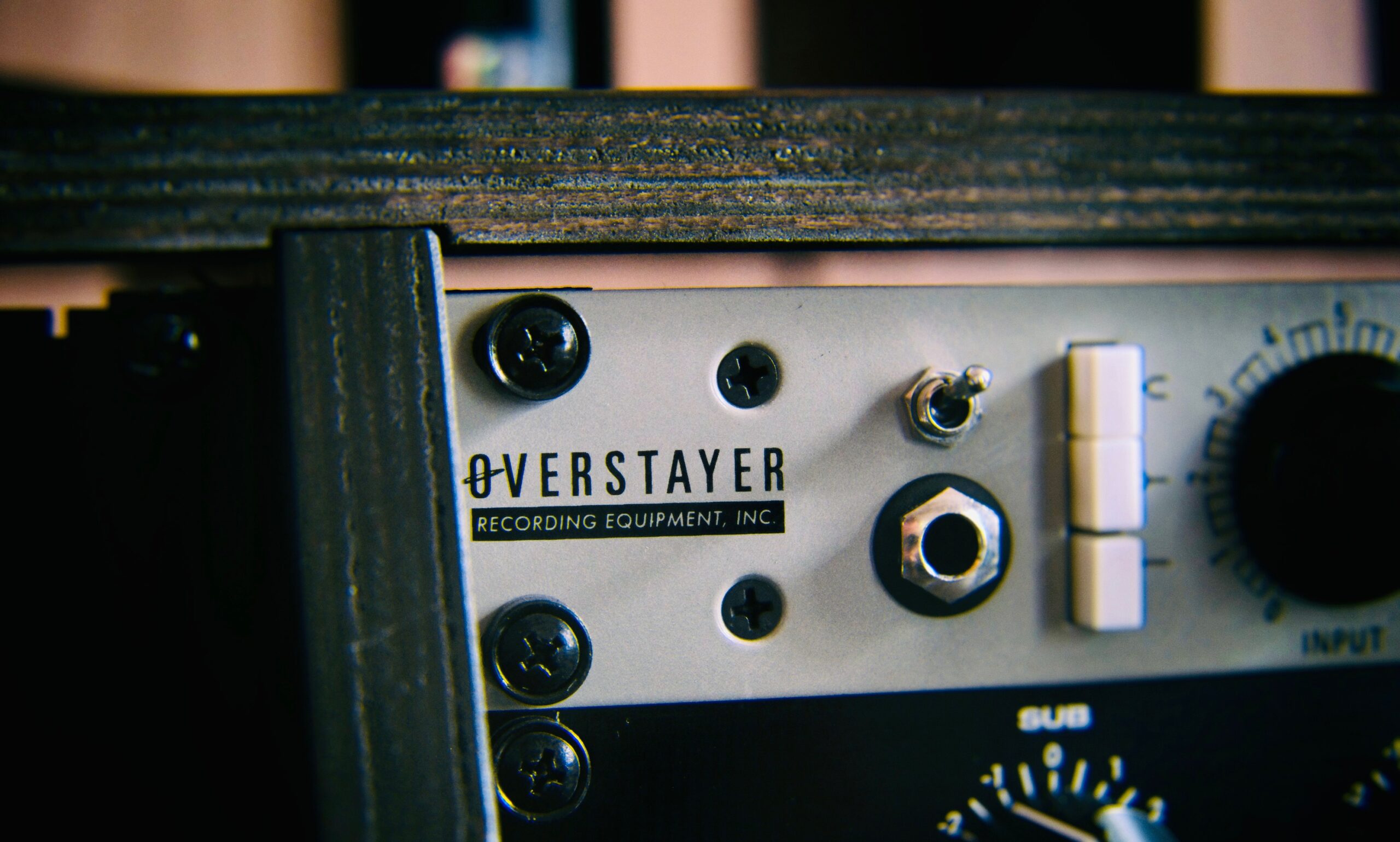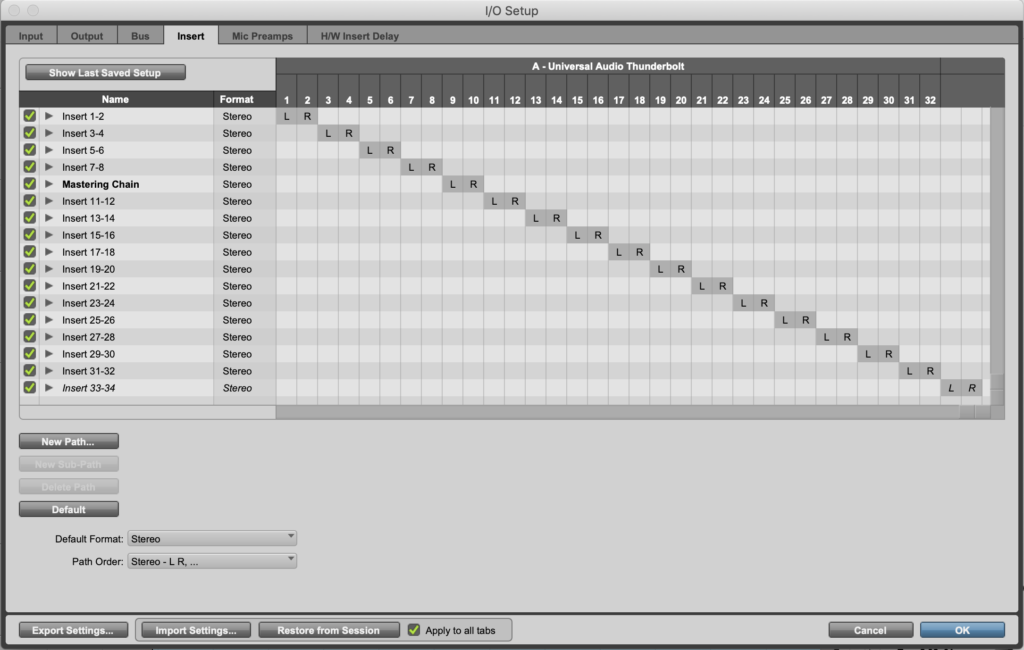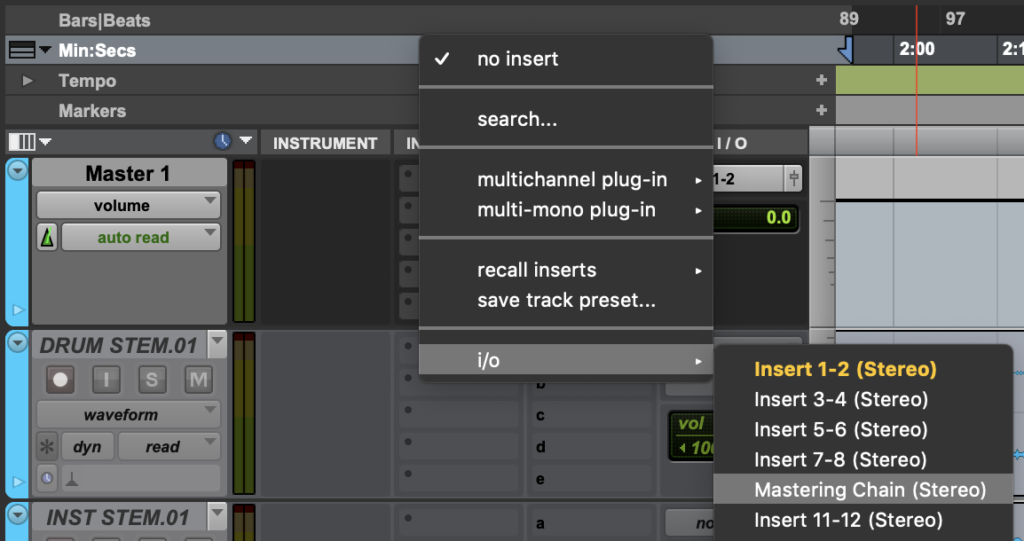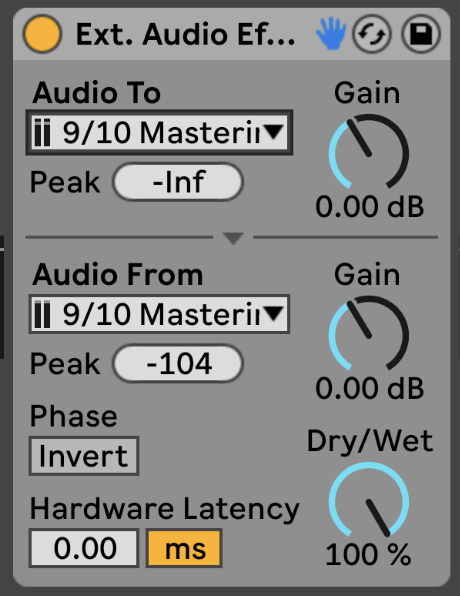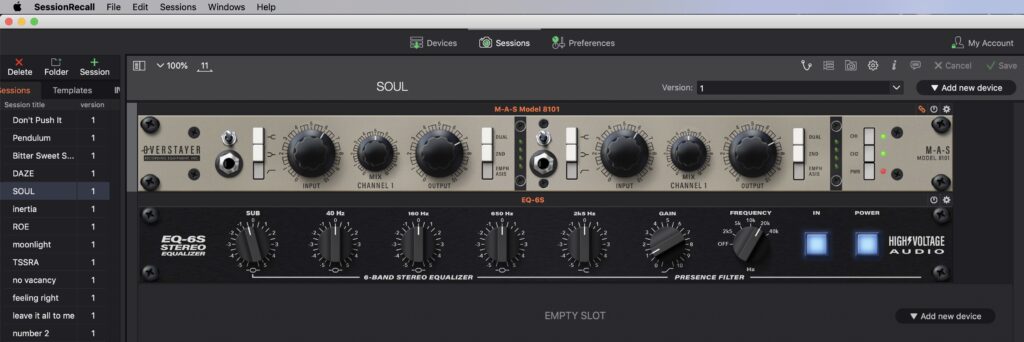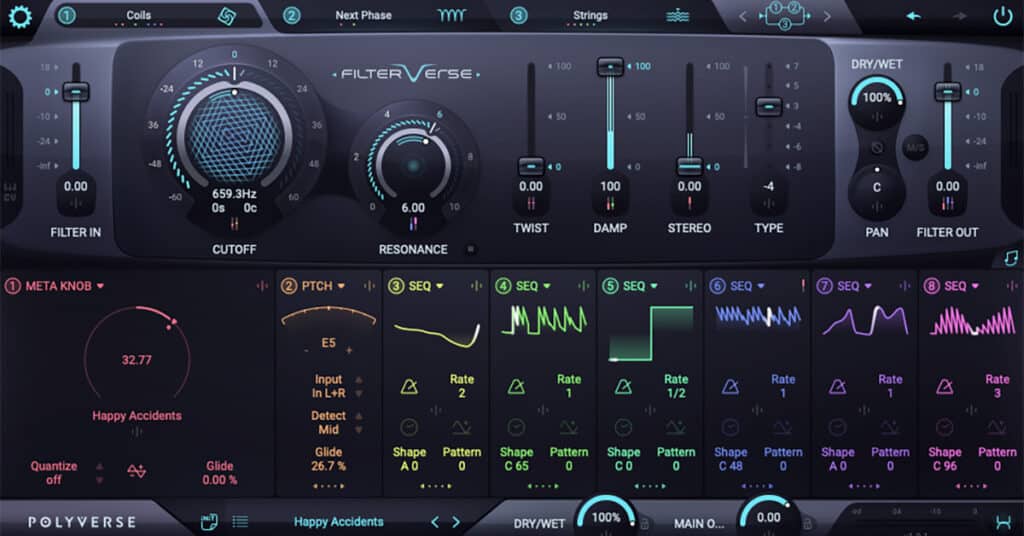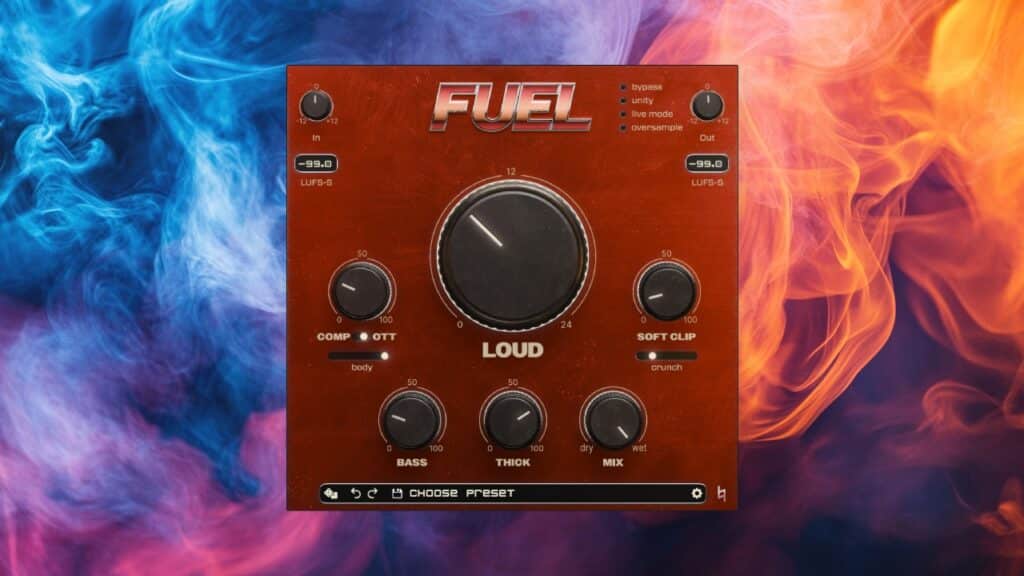The Overstayer MAS is a versatile saturator and sound-shaping tool, equipped with a vast palette of sonic textures ranging from sweet and subtle harmonics to an aggressive analog crunch, the MAS has become a mainstay in my signal chain when recording, mixing, and mastering. In this review, I’ll provide an overview of the functions of the unit, while also sharing audio examples of it in use.
SETUP
I purchased the MAS after hearing positive things about gear from Overstayer Recording Equipment from several engineer friends, particularly the sturdy build quality, flexibility in use, and character-rich sound fidelity. Upon unboxing, the attention to detail that went into the design and construction of this unit was immediately apparent.
I’ll discuss the input and output section of the MAS further down, but simply put, incorporating it into my UAD Apollo workflow was quite easy. I go from 2 of the Line Outputs on my Apollo (9/10), to the inputs of the MAS, and then from the outputs of the MAS back to the adjacent Line Inputs of the Apollo. With a few adjustments to the UAD Console software, and then renaming the Line Inputs and Outputs in Pro Tools, Ableton Live, etc. getting a signal to the MAS was stress-free. In Pro Tools, I insert the MAS not unlike an audio plugin, when using Ableton Live I utilize the External Audio Effect.
The I/O in Pro Tools which shows how I configure my mastering chain, which includes the Overstayer MAS.
The Mastering Chain shows up as an I/O Insert, allowing me to send signal to the Overstayer MAS without a patchbay.
The External Audio Effect within Ableton Live, which is an incredibly flexible tool for incorporating outboard gear into your setup.
THE CONTROLS
The MAS covers a lot of sonic territory without ever feeling overwhelming. Controls found on the front panel include:
High-Frequency EQ Switch
Fixed +2 dB high shelf boost at 12KHz. Perfect for adding a bit of clarity and air to program material of all kinds.
Low-Frequency EQ Switch
Fixed +2 dB low shelf boost at 100Hz. This is particularly effective on adding weight to bass, kick, drums, and even during mastering.
High Pass Filter Switch
Fixed 2 pole high pass filter with a resonant peak at 50Hz. For tracks that have an abundance of low frequencies in the first place, or if you simply don’t want to saturate the low end so much, this is an excellent feature.
INPUT Control
Sets the input gain, and determines how hard the channel is driven.
(Note that there is a version of the Overstayer MAS with stepped switches for more precise recall, on this version the range of this control -17.5dB to +21.5dB, unity is 3′.)
MIX Control
Controls the balance of processed to unprocessed signal. This is perhaps the most useful feature of the Overstayer MAS. Sometimes I’ll drive the input really hard, and simply dial back the blend to taste. The result is retaining the characteristics of the original untreated signal, while still hearing the expressive saturation of the MAS.
OUTPUT
Sets the final output level, post MIX control.
DUAL Switch
Adds a second discrete stage in series to the signal path spreading the load among stages, creating a more complex harmonic character.
2ND Switch
Shifts the response of the circuitry to have stronger second harmonic content.
EMPHASIS Switch
Sets the curve of the harmonic content, shifting the focus to the middle and upper ranges allowing fundamental frequencies to remain un-clipped. This control greatly changes the behavior of the Overstayer MAS, allowing the unit to go from adding harmonics subtly, to making things sound as if they were on the brink of destruction.
CH. 1/CH. 2 Switches
Engages each respective channel, relay-based.
PWR
Turns on the audio power.
IN USE
The Overstayer MAS sounds fantastic on pretty much everything you run through it. From individual tracks, to subgroups, and even when mastering, the MAS has a tasteful character that can be scaled back using the mix knob. Whether or not your tracks need the analog attitude of the unit is a different story. No plugin or hardware is going to work on 100% of the program material you put through it. That said, I’ve found the Overstayer to be useful for a wide variety of tasks. Let’s cover some of the common applications I use it for.
DRUMS
The Overstayer MAS is absolutely glorious on drums—the way it shapes transients, the low and high shelves, and the different types of saturations, all lend themselves to drum processing. Have a listen:
KICK AND SNARE
Version A is with no effect, Version B is with a moderate amount of the Overstayer MAS, and Version C pretty heavily saturated with the HF and LF shelf switched on. Notice the change in timbre and clipping of transients as the effect becomes more pronounced.
DRUM BUSS
Version A is with no effect, Version B is with a moderate amount of the Overstayer MAS, and Version C pretty heavily saturated with the HF and LF shelf switched on. Notice the change in timbre and clipping of transients as the effect becomes more pronounced.
VOCALS
For adding a certain grit and upfront character to vocals, the MAS shines. The HF Shelf also imparts some clarity onto the material. I will say, that sometimes the esses can become a bit crispified when saturated, so it’s perhaps advisable to use a de-esser before hitting the MAS.
Version A is with no effect, Version B is with a moderate amount of the Overstayer MAS with the HF shelf switched on, and Version C pretty heavily saturated with the HF shelf switched on and with the effect dry/wet blend set to about 70%. Notice the change in timbre, added harmonics, and smoother dynamics as the effect becomes more pronounced.
GUITARS
Version A is with no effect, Version B is with a moderate amount of the Overstayer MAS, and Version C pretty heavily saturated with the HF and LF shelf switched on. Version C is HAIRY. Notice the change in timbre, grittiness, and perceived intensity as the effect becomes more pronounced.
MIX BUSS AND MASTERING
The Overstayer MAS serves as a Swiss-Army processor for entire mixes. The low cut, LF, and HF Shelves all come in handy when fixing a variety of mix issues. The MAS helps tracks sound more upfront, polished, and finished, making it an excellent choice for anyone looking for a ‘color box’ to strap across an entire mix when mastering. Again, it doesn’t work 100% of the time—some tracks don’t need what the MAS has to offer, and that’s totally fine. Regardless, this is an impressive processor, and much program material can benefit from the character of the MAS. These examples are subtle due to the nature of mastering and mix bus processing, but hear for yourself:
Version A is with no effect, Version B is with a moderate amount of the Overstayer MAS with the HF and LF shelf switched on, and Version C pretty heavily saturated with the HF and LF shelf switched on, with the effect at about 60% wet. Notice the increased brightness and thump, smoothing of transients, perceived intensity, and low-end clipping as the effect becomes more pronounced.
Version A is with no effect, Version B is with a moderate amount of the Overstayer MAS with the HF and LF shelf switched on, and Version C pretty heavily saturated with the HF and LF shelf switched on, with the effect at about 60% wet. Notice the increased brightness and thump, smoothing of transients, perceived intensity, and low-end clipping as the effect becomes more pronounced.
When mixing and mastering, I use Session Recall to help document the settings of my Overstayer MAS (and other outboard gear) once I finish a pass. It’s a huge time-saver and I recommend it to anyone who uses an analog or hybrid setup.
BASS
The MAS actually has a DI input, making it useful for tracking things like bass. When mixing, the LF shelf adds girth to bass, and when pushed subtly, the added harmonics help the instruments sit better in a mix. Check it out:
Version A is with no effect, Version B is with a moderate amount of the Overstayer MAS, and Version C pretty heavily saturated with the HF and LF shelf switched on. Notice the perceived intensity of the bass performance, as well as increased harmonic content as the effect becomes more pronounced. It’s important to note that this effect is much different in insolation than in context.
OVERSTAYER MAS SUMMARY
Certain pieces of studio equipment simply exist to serve a utility—plenty of equalizers, compressors, and other processors fit into this category. Useful, if a bit unsexy. The MAS from Overstayer Recording Equipment does not fall into this category. This is a fun piece of equipment that makes being in the studio more interesting, unpredictable, and enjoyable. There is one downside to the MAS: Now that I’ve incorporated it into my workflow and I’ve heard all it can do, I’m coveting the rest of the Overstayer lineup, which includes numerous compressors, saturators, and a modular channel.
For anyone looking to expand their sonic arsenal to include a somewhat vintage-inspired hardware saturation unit sporting some modern features and flexibility, I can’t strongly enough recommend the Overstayer MAS. It’s worth noting that Softube has a plugin version of the MAS, that I’ve not personally had experience with yet. Given their record of high-quality plugin emulations of classic hardware, I’d be willing to bet it’s a worthwhile investment.
EXTRAS
Assess your knowledge of essential audio concepts using our growing catalog of online Quizzes.
Explore more content available to Subscribers, Academic, and Pro Members on the Member Resources page.
Not a Member yet? Check the Member Benefits page for details. There are FREE, paid, and educational options.

